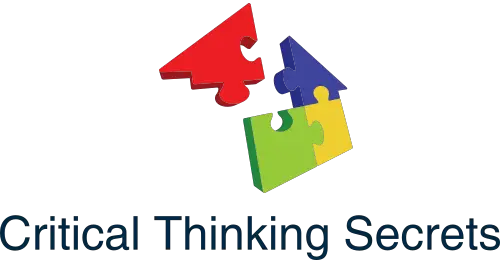The Hedgehog Concept is a simple yet powerful idea introduced by Jim Collins in his acclaimed book “Good to Great.”
At its core, the Hedgehog Concept helps individuals and businesses focus on what they can do best, what they are passionate about, and what drives their economic engine. This framework uses a metaphor inspired by an ancient Greek parable where a fox knows many things, but a hedgehog knows one big thing.
By aligning these three aspects, organizations can find clarity and a path to success.

Jim Collins’ concept encourages businesses to cut through complexity and concentrate on their core strengths. This focus helps companies identify where they can truly excel and outperform competitors by understanding their unique capabilities.
The process requires deep reflection on what defines the heart of their operations and where true passion lies.

The Hedgehog Concept focuses on achieving clarity and focus in business strategy, drawing inspiration from the ancient Greek philosopher Isaiah Berlin’s metaphor of foxes and hedgehogs. It is a simple concept that uses a framework involving three critical circles.
Origins and Philosophy
The Hedgehog Concept comes from an essay by Isaiah Berlin, who described the world as consisting of foxes and hedgehogs. Berlin used this metaphor to differentiate those who know a little about many things (foxes) from those who focus deeply on one important thing (hedgehogs).
In business, this philosophy transforms into a focus-driven approach. Businesses benefit from clarity and focus as they channel efforts into what truly matters.
The concept is straightforward, advocating that chasing many goals can be overwhelming, while concentrating on one main goal leads to success. This approach defines the core philosophy behind the Hedgehog Concept, encouraging simplicity and deep focus.
The Three Circles Framework
The Hedgehog Concept is structured around three intersecting circles. These circles help organizations determine their core strengths.
- Passion: Identify what the organization is deeply passionate about. This ensures that efforts are aligned with intrinsic motivation.
- Best at: Determine what the organization can be the best in the world at. This clarity provides direction and focus.
- Economic Engine: Understand what drives the organization’s economic or resource engine. This is crucial for sustainable growth.
When these three elements intersect, they form the Hedgehog Concept, guiding the organization towards sustained success. Each circle is essential, and the overlap provides a unique strategic insight that combines passion, skill, and profitability.
Applying the Hedgehog Concept to Business Strategy
Using the Hedgehog Concept in business strategy involves aligning what a company is truly passionate about, what it can be the best at, and what drives its economic engine. This framework supports achieving long-term success by creating a strategic plan focused on these core areas.
Identifying Core Competencies
Core competencies are the fundamental strengths of a business. Identifying them helps in focusing efforts where the company excels.
For example, Walgreens leveraged its core competency in delivering convenient, accessible pharmacy services to become a leader in the industry.
A business should assess its internal strengths. This includes unique skills or knowledge that differentiate it from competitors.
In the context of the Hedgehog Concept, understanding these competencies allows a company to refine its strategic focus. Thus, businesses can maintain consistency and efficiency in operations.
Leadership teams can use tools like a Venn Diagram to pinpoint where their competencies overlap with customer needs and market opportunities.
Aligning resources with these competencies also enhances employee engagement, promoting shared goals and strategies that build a competitive edge.
Determining Economic Drivers
Economic drivers are key elements that considerably impact a business’s profitability. Understanding the core economic engine involves identifying metrics like profit per customer visit, sustained cash flow, or profit per store.
This understanding helps in focusing on activities that boost the economic engine.
A company should evaluate what factors contribute most to its profitability.
For instance, Wells Fargo identified profit per customer as a fundamental driver, influencing its financial strategies.
By focusing on this, the company could align its resources and strategies effectively.
This alignment ensures the company targets its efforts on high-impact areas, supporting sustained economic viability.
Determining these drivers enables businesses to prioritize actions that strengthen their economic engine and drive long-term profitability.
Cultivating a Deep Understanding
Gaining a profound understanding of the factors that contribute to a company’s success is crucial. This involves in-depth market analysis and assessing internal capabilities.
Companies should explore what they can do better than anyone else, ensuring a focus on sustainable success.
Key to this understanding is evaluating market trends, customer preferences, and competitive landscape.
By doing so, businesses like Walgreens and Wells Fargo have identified market gaps and turned them into opportunities.
This helps in crafting strategies that build a strategic alignment with core values and goals.
By fostering a clear and deep understanding, businesses can overcome challenges and create a strategic framework that aligns with their core strengths, ensuring sustained success and strategic alignment.
Such clarity also aids in resource alignment with strategic goals, promoting consistency across the organization.
Frequently Asked Questions
The Hedgehog Concept is a key idea introduced by Jim Collins in his book Good to Great. The concept emphasizes simplicity and focus, helping organizations and individuals identify what they can excel at and understand what truly drives their success.
What does the Hedgehog Concept entail for personal development?
In personal development, the Hedgehog Concept involves identifying a single core strength or passion. By focusing on this area, individuals can set clearer goals and avoid distractions. This approach encourages a disciplined pursuit of what aligns best with one’s talents and passions.
How does the Hedgehog Concept relate to business strategy?
In business strategy, the Hedgehog Concept encourages companies to focus on what they can become the best at. This involves understanding what drives their economic engine and what they are deeply passionate about.
This focus helps create a clear vision and guides strategic decisions.
What are the main components of the Hedgehog Concept in ‘Good to Great’?
The main components include identifying what a company can be the best at, what drives its economic engine, and what it is passionate about. These three circles provide clarity and direction, helping companies make the leap from good to great.
How can one create a Hedgehog Concept for their organization?
To create a Hedgehog Concept, an organization should analyze its strengths, passion, and economic drivers.
This involves asking probing questions to understand what the organization can excel in and where its greatest opportunities lie. Consistently revisiting these ideas helps refine the concept over time.
In what ways does the Hedgehog Concept differ from the fox strategy?
The Hedgehog Concept focuses on simplicity and a single overarching goal. In contrast, the fox strategy involves pursuing many complex strategies and goals.
While foxes know many things and adapt quickly, hedgehogs know one big thing and focus deeply on it.
What are some practical examples of the Hedgehog Concept applied in real-world scenarios?
Real-world examples include companies that have transformed industries by focusing on their core competencies.
For instance, companies that identify a niche market and excel in providing a specialized product often outperform larger competitors by sticking to their Hedgehog Concept.





